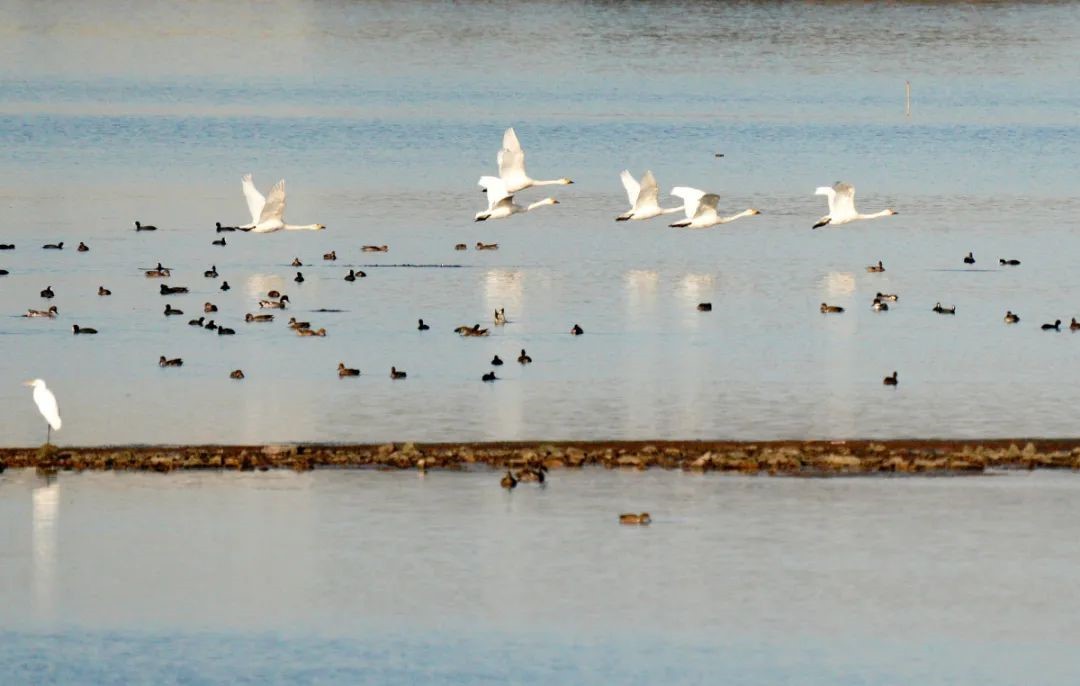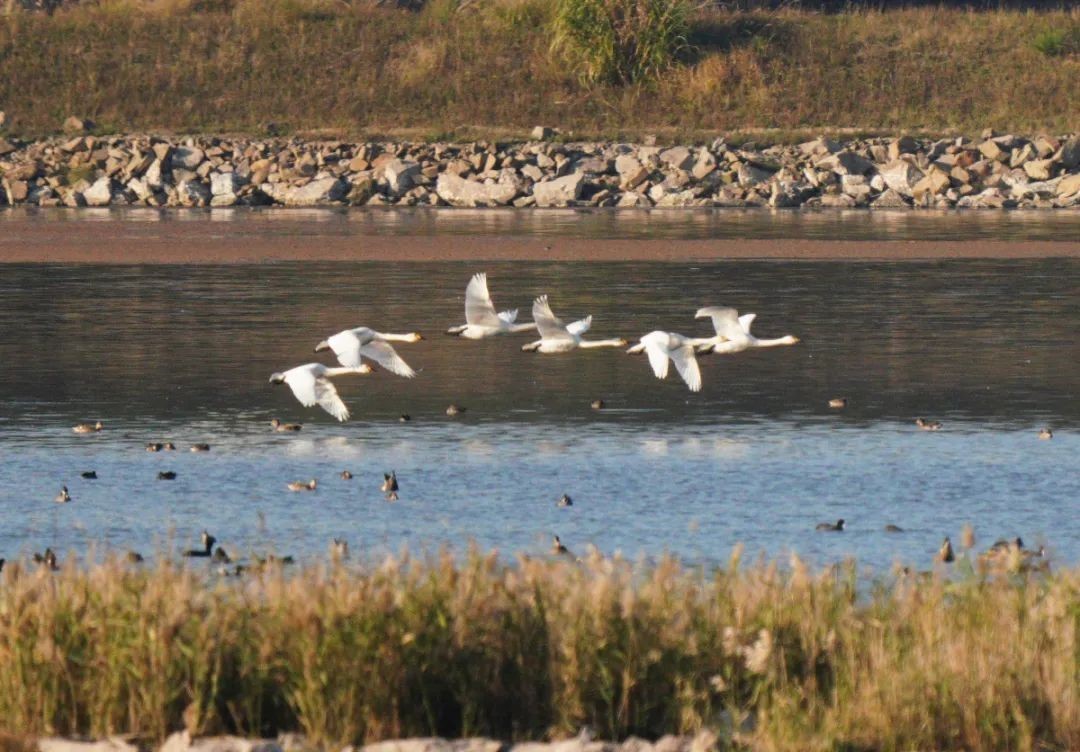(Video: Ningbo Evening News)
A fortunate photographer recently captured the first reported sighting of migratory swans at Daorenshan Wetland Park of Xiangshan County, Ningbo City of Zhejiang Province. The elegant birds were observed gracefully gliding along the water’s surface and spreading their majestic wings to take flight.

(Photo: Ningbo Evening News)
The white swan, a national second-level protected animal in China, is a migratory bird that inhabits the frigid regions of Siberia. Every year as winter approaches, the swans migrate to China’s Henan, Shandong and southern provinces. They gradually return to their primary habitat when spring arrives the following year.
Daorenshan has gained considerable public attention in recent years for attracting an array of diverse and unusual avian species, including black-faced spoonbills, pheasant-tailed jacanas, pied avocets, redhead pochards, bean geese, cormorants, and northern pintails.

(Photo: Ningbo Evening News)
With the transition from autumn to winter comes the peak time for the migration of wintering birds. Ningbo, situated on the coast of the East China Sea, is along the migratory path from East Asia to Australia, making it an optimal location for observing wintering waterfowl.

(Photo: Ningbo Evening News)
In recent days, the breathtaking spectacle of bird migration has also been witnessed at Ningbo’s Ninghai Bay, where thousands of shorebirds, gulls, herons, and waterfowl have congregated along the coastal mudflats and wetlands. The Hangzhou Bay National Wetland Park, known as a sanctuary for migratory birds, has recently been recognized as an ecologically significant wetland on the national register. This site serves as a crucial wintering and resting habitat for endangered species like the black-headed gull and black-faced spoonbill. It attracts more than one million migratory birds annually.
(Source: Ningbo Evening News)


